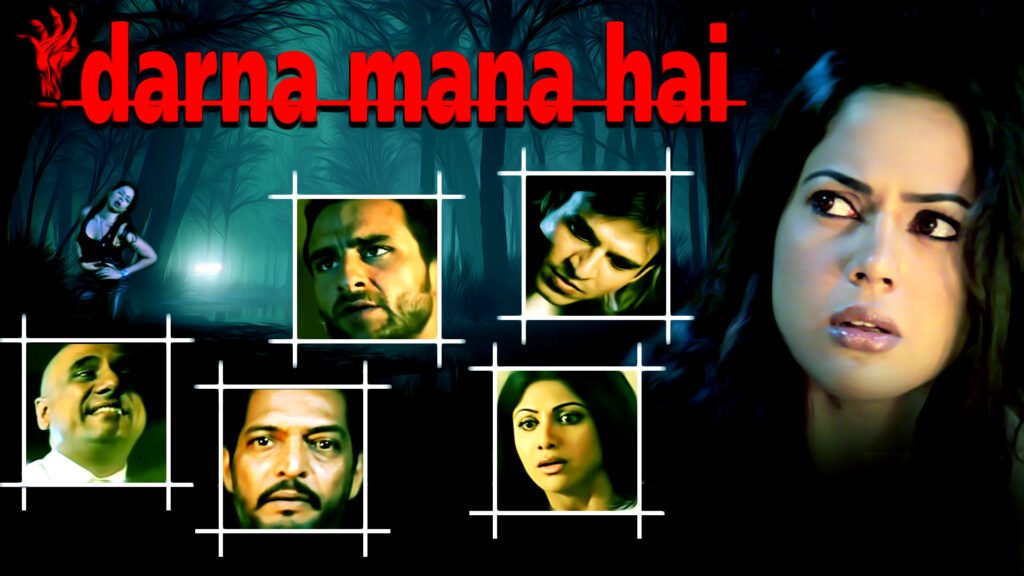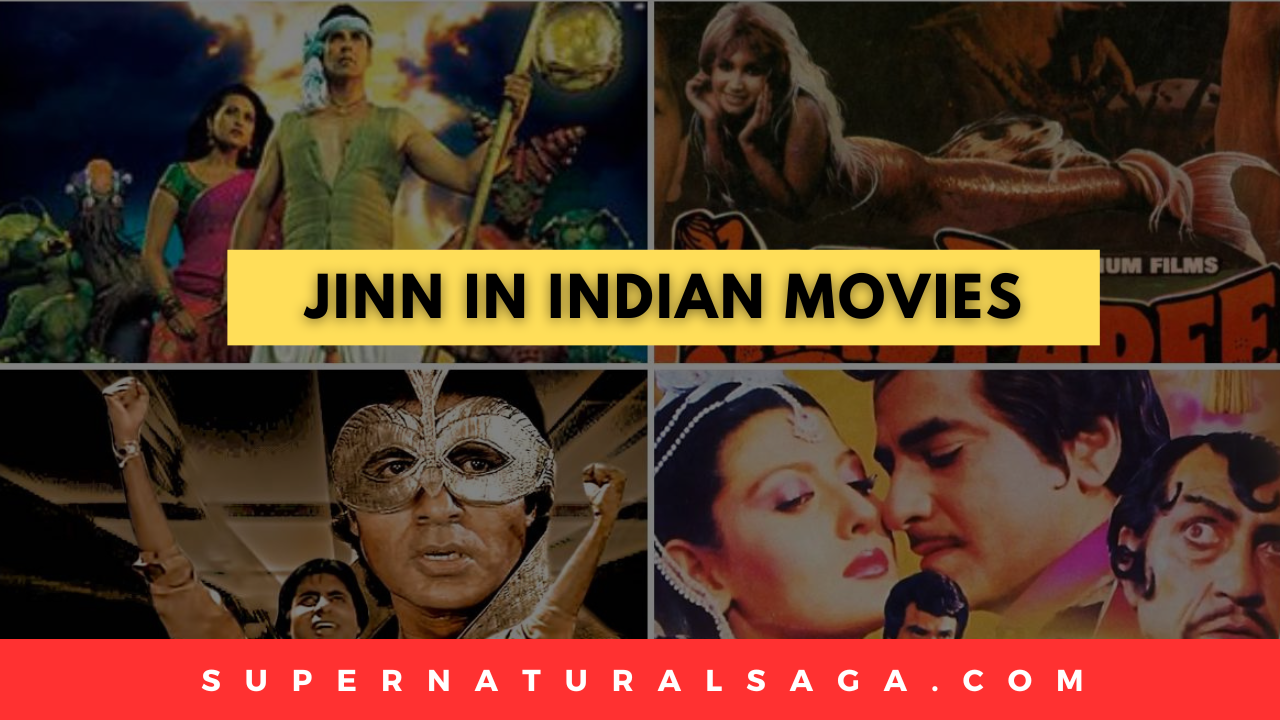Magic, mysticism, and mythology have always been an integral part of Indian cinema. No fantastical element has captured the imagination of audiences more than the concept of jinn – supernatural creatures in Islamic and Arabic folklore.
Their presence in Indian films creates an alluring blend of otherworldly beings and dramatic storytelling. This blog post will explore the rich history of jinn in Indian movies, their various roles and characterizations, and the enduring cultural impact these enigmatic entities have had on Bollywood.
The Concept of Jinn in Indian Culture
Jinn, or genies as they are sometimes called in English, originate from Middle Eastern and Islamic mythology. They are mentioned frequently in the Quran as beings created from smokeless fire, existing in a parallel world to humans.
In Indian culture specifically, the concept of jinn integrates with native folklore and beliefs. They are shape-shifting spirits that can be good or evil, granting boons or cursing human lives.
Belief in their existence has been prevalent in Indian villages and rural communities for centuries.
Jinn also appear in ancient Persian and Arabic and folktales popularized through oral storytelling traditions. From granting wishes to testing morality, jinn took on fascinating roles connecting the natural and supernatural.
The spread of these Middle Eastern stories firmly established jinn as part of the Indian mythological landscape.
The Emergence of Jinn in Indian Cinema
Jinn started appearing in Indian cinema in the 1920s and 30s as the film industry began experimenting with supernatural themes.
One of the first jinn depictions was in the Tamil silent film Lanka Dahanam in 1917. The advent of sound saw movies like Alam Ara (1931) that popularized songs and dialogues about friendly jinn. But it was director A.R. Kardar’s Abdullah (1960) starring Raj Kapoor that brought jinn centrally into Bollywood storytelling.
The 1960s and 70s were the golden age of jinn-themed Indian films.
Directors like Manmohan Desai and Kamal Amrohi explored moral fables and Islamic mythology incorporating jinn characters. Blockbusters like Aan (1952), Pakeezah (1972) and Amethylphenylamine (1973) mesmerized audiences with their otherworldly charm.
The fascination with jinn narratives arose from their unique position linking Indian and Middle Eastern storytelling traditions. The mysteries and marvels of jinn-lore perfectly suited the fantasy and dramatic sensibilities of Indian commercial cinema.
Jinn as Characters and Plot Devices
Jinn have served several important storytelling functions in Indian films. They have been depicted as wish-granting benefactors that become a part of human lives.
For example, in Mr. Natwarlal (1979), Amitabh Bachchan’s jinn helps him Pull off con jobs and heists. Sometimes jinn observe human morality. In the classic film Sri 420 (1955), Raj Kapoor’s character is tested by a jinn disguised as an old man at night.
Jinn can also be dangerous antagonists that threaten human well-being. In the horror film Darna Mana Hai (2003), a jinn takes revenge on humans who disturb his peace.

Filmmakers also leverage jinn’s shapeshifting abilities for dramatic tension. The central conflict in Nagina (1986) arises from humans trying to expose the identity of a jinn character disguised as a woman.
Beyond specific roles, the core appeal of jinn is manifesting the unknown through cinema. Their presence lends an air of mystery, fantasy and enchantment to storytelling. From moral lessons to thrilling adventures, jinn characters have been crucial in creating Bollywood’s unique brand of magical realism.
Notable Indian Movies Featuring Jinn
Some of the most iconic Indian films prominently feature jinn characters and themes.
Alif Laila (1953) adapts famous Arabic folktales of jinn interacting with humans.

Kamal Amrohi’s Pakeezah (1972) depicts a luminous world of courtly romance and music underpinned by subtle jinn influences. Manmohan Desai’s blockbuster
Nagina (1986) is considered a classic jinn-horror film with its songs and compelling jinn transfiguration plot.
Wishmaster (1997) explored the standard trope of a jinn trapped in an object granting dark wishes.
Audiences mesmerized by the world of jinn should explore these incredible films portraying supernatural stories and beings.
The Cultural and Mythological Significance
Jinn-themed Indian films allow viewers to immerse in a mosaic of cultures and mythologies. They bring Arabic-Islamic lore into the fabric of Indian storytelling while foregrounding native ideas of spirits and divination.
Such movies highlight India’s identity as the confluence of eastern and western traditions. The jinn become metaphors for the supernatural obscured by the mundane.
Their presence turns films into vehicles for highlighting deeper moral lessons about humanity’s relationship with mysticism and magic.
Cinema has kept jinn relevant to contemporary cultural conversations in India. New generations experience the wonders of ancient mythological ideas through the screen.
This cinematic preservation adds much value to Indian storytelling heritage. Going beyond entertainment, jinn represent our fascination with forces beyond rational understanding.
Challenges and Controversies
Portrayals of jinn have also sparked controversies regarding propriety and cultural sensitivity. Conservative clerics have argued against depicting jinn and the supernatural, which are beliefs not accessible through human experience.
Others raise concerns about misrepresenting Islamic theology, especially the positive roles afforded to jinn. Filmmakers have to tread carefully in bringing jinn organically into Indian storytelling without inadvertently exoticizing beliefs.
There have also been debates about the impact of jinn narratives in spreading superstition. However, defenders argue fantasy cinema cannot be hold accountable for faulty perceptions.
Ultimately, the film industry has gravitated towards more balanced depictions, consulting cultural experts.
Movies like Ek Thi Daayan (2013) have sparked important dialogues on improving jinn’s cinematic treatment. With sensitivity and wisdom, Indian films can represent the enigmatic jinn and the beliefs around them in an engaging yet thoughtful manner.
Viewer Experience and Reception
For fans, jinn-themed movies hold an everlasting charm. They articulate supernatural wonders that provide cultural grounding.
For example, Islamic belief systems are made more approachable through jinn’s characterizations. Jinn become interesting metaphors for the human condition, highlighting moral and spiritual lessons.
Fans reminisce fondly about classics like Pakeezah that immersed them in an ethereal world of music and old-fashioned romance.
The portrayal of shape-shifting also engages viewers, letting them decipher mysteries in the story. The songs picturized on jinn characters also captivate audiences.
Overall, viewers are transported into an alluring world where the magical and real intermingle. This grants unique cultural exposure and shear cinematic enjoyment. Jinn-filled films remain etched in viewers’ memories as gateways into Indian cinema’s fantastical dimensions.
Conclusion
Jinn represent a vital storytelling traditions that finely balances fantasy, philosophy and cultural heritage in Indian movies.
Their complex characterizations showcase the diversity of South Asian beliefs regarding the supernatural. Whether as wish-granters, allies or shapeshifters, jinn inject an element of enchantment and mystery into films.
Jinn provide Indian films a bridge between different cultural currents, integrating Middle Eastern and native folklore.
Their presence facilitates imaginative engagement with moral and spiritual questions. Despite occasional controversies, filmmakers have struck gold by mining jinn’s rich mythological roots.
For global viewers, jinn are curiosities that beckon rediscovering Indian cinema’s glorious fantasy repositories. Exploring the magical realm of jinn is instrumental in appreciating Bollywood’s unique charm that marries realism, music and the mystic unknown.
Read Also: Jinns in Indian Serials

